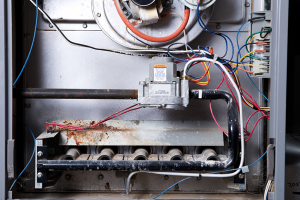
19 May, 2020
Well, there’s no fixed answer. It’s difficult to give an exact amount of time because there are so many factors involved. While we can’t tell you exactly how long a furnace should last, we can certainly provide you with some info on average furnace lifespan, factors that affect furnace life expectancy, furnace replacement signs, and some ways you can delay the inevitable.
Read on to find out how long a furnace lasts and when the right time to replace it is.
Wondering what the average life expectancy of a gas furnace is? There are mixed opinions about furnace life expectancy. Although some furnaces can last more than 40 years (extremely rare), the average life of a furnace is around 15 to 30 years. As long as you have scheduled annual furnace maintenance, it should easily last over 15 years.
Just like your car, your older furnace may need some basic repairs. However, if the furnace is out of warranty, some people prefer buying a new model even before a minor repair is needed. Others are willing to make a number of repairs before letting go of the old furnace.
There are a number of factors that affect gas furnace lifespan:
Although you may want your furnace to last forever, every unit will ultimately need to be replaced. Often, you’ll see signs that an aging furnace is ready to give up. Some of these signs include:
Finding out that your furnace needs replacing after it has completely shut down is not desirable. So, keep a watchful eye on these warning signs to keep your costs low and prevent a frigid night without heat.
The best way to extend gas furnace lifespan is regular cleaning, maintenance, and service. Here’s what you can do to ensure the best performance and efficiency of your furnace while preventing premature failure:
It’s best to hire a qualified HVAC expert to regularly check and clean your furnace.
Got your furnace inspected, repaired, inspected again, and still no improvement? It’s time to buy a new one.
If the previous furnace proved itself to be resilient over time, consider buying a newer version of the same model. Though the upfront investment may seem high, buying a newer version has a lot of advantages compared to their older counterparts.
New furnace models are constructed with an annualized fuel utilization efficiency (AFUE) rating that characterizes the efficiency of each model. It signifies the amount of heat the furnace can create vs. how much is lost in the combustion process.
A typical gas furnace has an AFUE rating of 80% or higher, with some best units having a rating of up to 98%. Remember, the higher the efficiency, the lower your heating expenditures.
Not sure if your furnace needs to be replaced or simply needs a repair? Contact the Fargo furnace repair specialists at Valley Service. We’ll help you understand the current efficiency of your furnace and can provide you with an affordable model should it need replacement. Call today at 701-293-5701 or fill out our online contact form. Our Fargo HVAC team looks forward to helping you with all your heating needs!